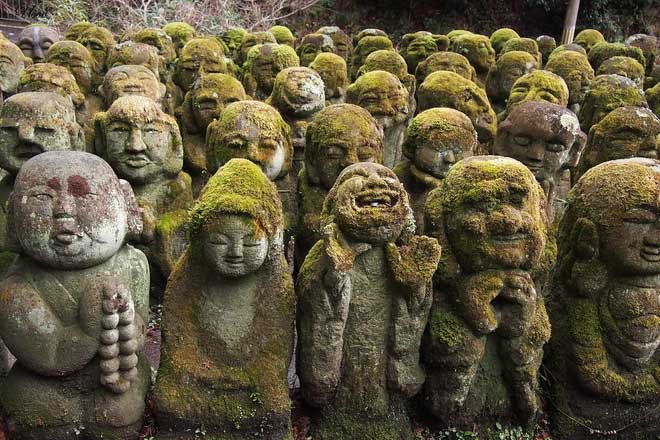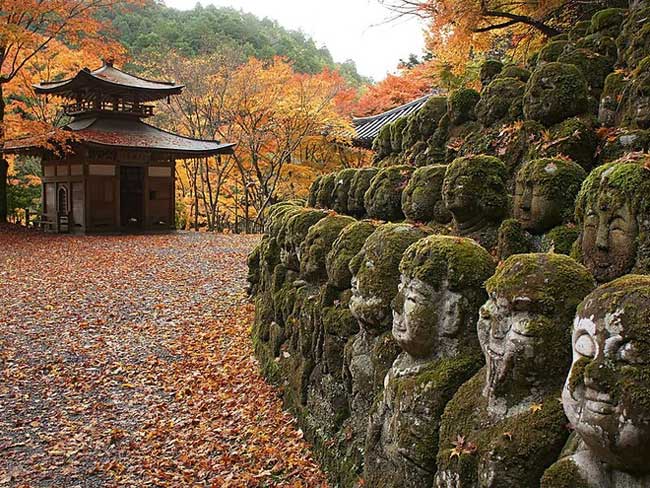Within the famous Otagi Nenbutsu-ji Temple in Kyoto, Japan, there are 1,200 unique stone statues, each with a completely different expression.
Otagi Nenbutsu-ji is a temple located in the outskirts of Arashiyama, Kyoto, Japan. The temple is renowned for its collection of 1,200 unique stone statues. Otagi Nenbutsu-ji is nestled in the hills to the west of Arashiyama, and the 1,200 statues represent the disciples of Buddha.
The Otagi Temple was originally established in the Higashiyama area in 770. However, it was completely washed away when the nearby Kamo River overflowed its banks. In the early years of the Heian period (794-1192), the temple was rebuilt in the northeast of Kyoto. Over time, it fell into disrepair, leaving only three structures: the main hall, Jizo Hall, and the temple gate.

Stone statues in Otagi Nenbutsu-ji Temple in Kyoto, Japan.
In 1922, to preserve the remaining relics, the authorities decided to dismantle the remaining structures of the temple and reassemble them in their current location. Despite the relocation, the temple continued to suffer damage when a major storm caused significant destruction in 1950.
In 1955, the temple’s fortunes began to change with the appointment of a new chief priest, Kocho Nishimura. Upon his arrival, he initiated renovations of the temple.
Kocho Nishimura was not only a revered monk but also a talented sculptor. He conceived the idea of allowing visitors to carve statues for the temple under his guidance.
These rakan statues symbolize the disciples of Buddha. The statues were added to the temple between 1981 and 1991, but they now appear much older, covered in moss. Since each statue was carved by a different person, they are entirely unique, featuring impressive faces and expressions.

The scenery here is peaceful and serene.


















































